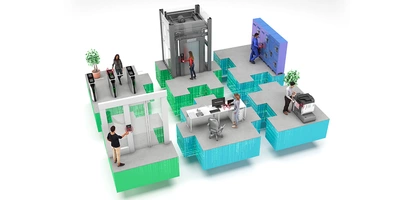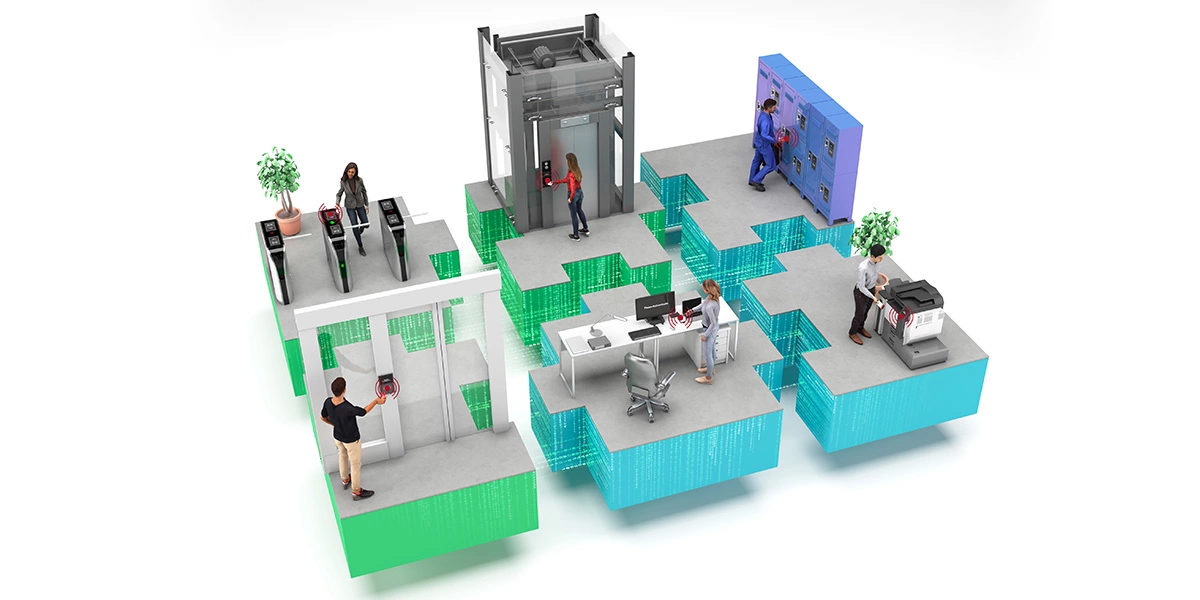Unifying Access: Breaking Down the Silos Between Physical and Logical Access


Physical vs. Logical Access: Why the Separation?
Physical access control systems (PAC) and logical access control systems were developed independently to address different security needs.
- Physical access control systems were primarily designed to manage entry to buildings and physical spaces. These systems are heavily dependent on hardware components like locks, turnstiles and gates to prevent unauthorized access into an area. While early access tech consisted primarily of physical keys, modern PAC systems for large buildings usually rely on ID badges, keypads with PIN entry or a combination. Some systems also incorporate biometrics.
- Logical access control systems evolved separately to protect digital assets, data and IT infrastructure. Logical access systems are software-driven, focusing on user authentication and authorization using digital credentials (e.g., usernames and passwords). Modern IT systems often utilize single sign-on (SSO) to enable access to all data and applications with one login. However, vulnerabilities in password systems have spurred organizations to look for more secure login methods or implement multifactor authentication (MFA).
Because these systems evolved separately, they still tend to be highly siloed in most organizations. Physical security threats and digital security threats have traditionally been viewed as distinct challenges requiring different solutions. Many organizations have separate teams responsible for physical security and IT security. This division often leads to different priorities, strategies and systems being implemented without coordination. In addition, most vendors specialize in either physical or logical access, with few providing integrated solutions that work for both.
However, this paradigm is changing. Access solutions based on Radio-Frequency Identification (RFID) or smartphone credentials using Near-Field Communication (NFC) or Bluetooth® Low Energy (BLE) can be used for both physical and logical access. This opens the door to new solutions that unify PAC and digital security.
The Benefits of a Unified Access System
A unified access system that combines both physical and logical access has significant benefits for organizations and end users. In “Office 2.0,” a unified system might include not only exterior and exterior doors but also elevators, parking gates, meeting room check-in, secure printing, device login and SSO for access to files and applications. The same access system can also be leveraged for access to amenities such as vending machines, smart lockers, supply cabinets, and the company cafeteria or gym. Unified access systems can also benefit universities, hospitals, manufacturers, the hospitality industry and other organizations. Some of the benefits include:
- Enhanced Security: Unifying physical and logical access control systems creates a comprehensive security framework that reduces vulnerabilities and gaps. By applying consistent security policies across both physical and digital environments, organizations can ensure that unauthorized access is minimized.
- User Convenience: With a unified access system, users benefit from the convenience of managing a single credential—such as an RFID card or a smartphone—for all their access needs. This reduces the hassle of managing multiple keys, cards and passwords, enhancing user satisfaction and productivity.
- Simplified Management: Centralized administration of access controls allows IT departments to efficiently grant, modify or revoke access rights. This creates efficiencies and improves oversight and compliance.
- Cost Savings: Unifying access controls leads to significant cost savings by reducing the need to maintain and upgrade multiple systems. Additionally, faster onboarding and offboarding processes for employees, contractors and visitors save time and resources, enhancing operational agility.
- Scalability and Future-Proofing: A unified access system is highly scalable, allowing organizations to easily add or modify access points and applications as needed. This adaptability ensures that the system can evolve with the organization’s security requirements and technological advancements.
Unifying PAC and Logical Access
How can organizations move to a unified access system? Often, the easiest solution is to leverage the technology already in place for PAC. The same ID badge or smartphone credential that is used for front door access can be employed for access to other physical assets as well as digital data and applications. In a unified system, users can use the same access credential to unlock everything they need throughout their day. That might include:
- Physical locations such as interior and exterior doors, turnstiles, parking gates, elevator systems, etc.
- Physical devices and assets, including computers, printers, lockers, production machinery, medical devices and other types of equipment.
- Business systems, networks and applications, including SSO.
The right RFID reader makes moving to a unified access system for both physical and logical access easy, affordable and future-proof. ELATEC works with organizations to plan and implement unified access systems. Our universal RFID readers make it easy to implement a universal system using the access technologies already in place for building entry. In our latest whitepaper, Physical Access Control: A Guide to Unified Access to All Your Physical Assets, we explore considerations in setting up a unified PAC system and how PAC systems can be extended to protect both physical access and digital data and systems.
THE ELATEC NEWSLETTER Your authentication update
As a frequent reader, you will always be up to date with the latest information on the topic of authentication, know the current trends and receive valuable tips. By signing up to our newsletter, we will make sure you won't miss any new blog articles ever again. And on top, you get even more exciting news on our products, events and industry trends.